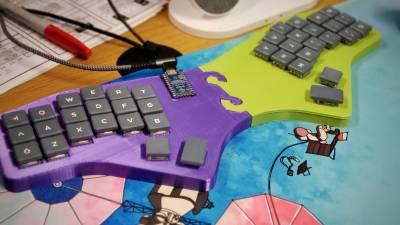 For their first custom, hand-wired keyboard, [terryorchard] aka [70rch] didn’t want to mess with making a total split, and we don’t really blame them. However, as you can see, they ended up with a monoblock split, which aside from being our own personal preference, looks fantastic, and also happened to be what fit on the print bed.
For their first custom, hand-wired keyboard, [terryorchard] aka [70rch] didn’t want to mess with making a total split, and we don’t really blame them. However, as you can see, they ended up with a monoblock split, which aside from being our own personal preference, looks fantastic, and also happened to be what fit on the print bed.
What you’re looking at is a 40% remix of the Alice layout with a columnar stagger. It’s also a bit 6×3 Corne-inspired on the ergonomic front. Brain-wise, it’s got an exposed Elite Pi driving a matrix of Kailh Choc pinks and an EC11 encoder. The encoder scrolls by default, and then becomes a volume knob on the numbers and symbols layer. One super cool thing about this keyboard is the secret third layer, which is unlocked by pressing the rotary encoder. This leads to some home row mods and disables the outside columns, culminating in a test 3×5 with two layers.
Via KBD #112
Historical Clackers: the Dart Marking Machine
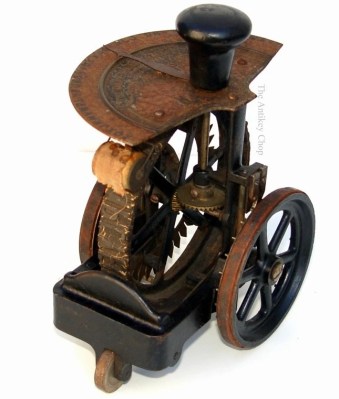
While we largely think of shipping crates as being stenciled or even burned when they need identifying marks, they haven’t always been branded this way. Introducing the Dart Marking Machine, which is arguably not a typewriter since it doesn’t by nature ‘apply succeeding characters to paper’. Well, it’s my column, and I say it definitely clacks and in an historic manner.
The Dart Marking Machine was marketed as a moveable typewriter for the addressing of envelopes and packages with 1″ tall letters and numbers. The patent was awarded in 1890 to one Wilbur E. Goodwin since inventor Lewis Dart had died before it could be issued. The Goodwin family was quite prominent around Hartford, Connecticut, and Wilbur seems to have been known for buying up other people’s ideas and patents and giving them a push.
Wilbur Goodwin teamed up with his friend Samuel C. Hurlbut to improve the Dart and make it more nimble. They soon attempted to produce more index typewriters based on the Dart, but Goodwin died in 1905, and the dream died with him. Think of Dart, Goodwin, and Hurlbut whenever you use an old-timey embossing label maker.
The Centerfold: Breadboard Macropad
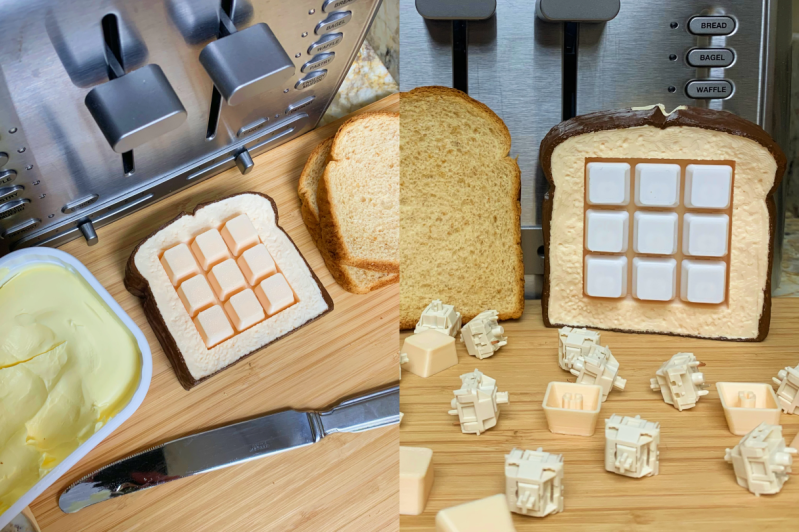 This installment’s centerfold comes courtesy of [SteBoards] via r/mk, and boy are these some tasty shots. If you know me at all, you know I love food in all its forms, especially (and emphatically) fake food. Although this isn’t your average centerfold material, I do hope you’ll excuse this foray into foodstuffs. All we really know about this macropad is that, aside from being delicious, it uses NovelKeys creams and looks just right with a lone yellow keycap in the middle position. But sometimes it’s nice when your centerfolds are a bit mysterious, eh?
This installment’s centerfold comes courtesy of [SteBoards] via r/mk, and boy are these some tasty shots. If you know me at all, you know I love food in all its forms, especially (and emphatically) fake food. Although this isn’t your average centerfold material, I do hope you’ll excuse this foray into foodstuffs. All we really know about this macropad is that, aside from being delicious, it uses NovelKeys creams and looks just right with a lone yellow keycap in the middle position. But sometimes it’s nice when your centerfolds are a bit mysterious, eh?
Do you rock a sweet set of peripherals on a screamin’ desk pad? Send a picture to Damn Fine Keyboards along with your handle and all the gory details, and you could be featured there and here! Or send it to me directly!
ICYMI: Wooden It Be Nice to Have Such a Macropad?
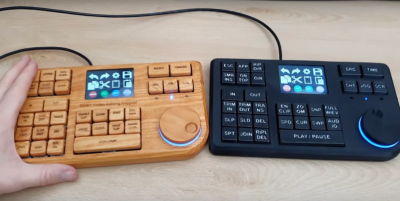 Sometimes you just need a macropad, and video editing is absolutely one of those times. Mostly, it’s all the dang shortcuts, though there are plenty of other programs with a ton of shortcuts.
Sometimes you just need a macropad, and video editing is absolutely one of those times. Mostly, it’s all the dang shortcuts, though there are plenty of other programs with a ton of shortcuts.
This lovely offering from [SS4H] is more than able to meet his needs, and features such extras as a magnetic rotary encoder and a built-in display.
I really can’t decide which one I like more. Both the 3D-printed and the wooden versions look fantastic and consumer-grade, but the wooden one is wooden. What do you think?
Got a hot tip that has like, anything to do with keyboards? Help me out by sending in a link or two. Don’t want all the Hackaday scribes to see it? Feel free to email me directly.

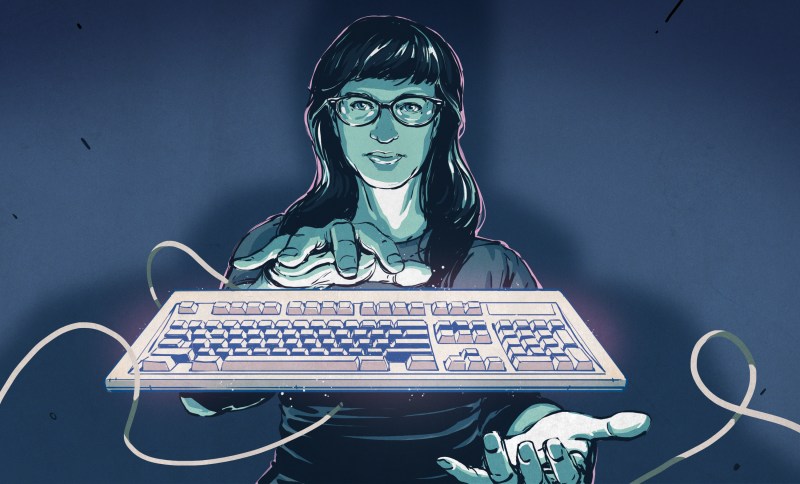














Hi Kristina – you know about this? The Kickstarter just started yesterday:
https://shifthappens.site/
wow those olivetti keycaps look wild
Hurlburt,
heh…heh
that’s the best thing since… 🍞
My dad had a couple of Oliveti electric typewriters in his office. One was his day to day and the other was an extra he used periodically. He kept them running until his repair guy couldn’t get parts. He eventually had a Brother until he was forced to fill in forms using software. We found one of the typewriters in his garage after he passed away.
I remember the hum of the typewriter and the way the keys felt when you pressed them the few times he let me play on the extra in his office. I guess that is why I like the IBM PC keyboards from the 80s. He also used an electric mechanical calculator (not much smaller than the oliveti typewriter) until the 1990s.
Last one is a duplicate from 25 Jan’ :
https://hackaday.com/2023/01/25/diy-macro-keyboard-wood-be-nice/
Maybe making a topic-sharing matrix within the team could help